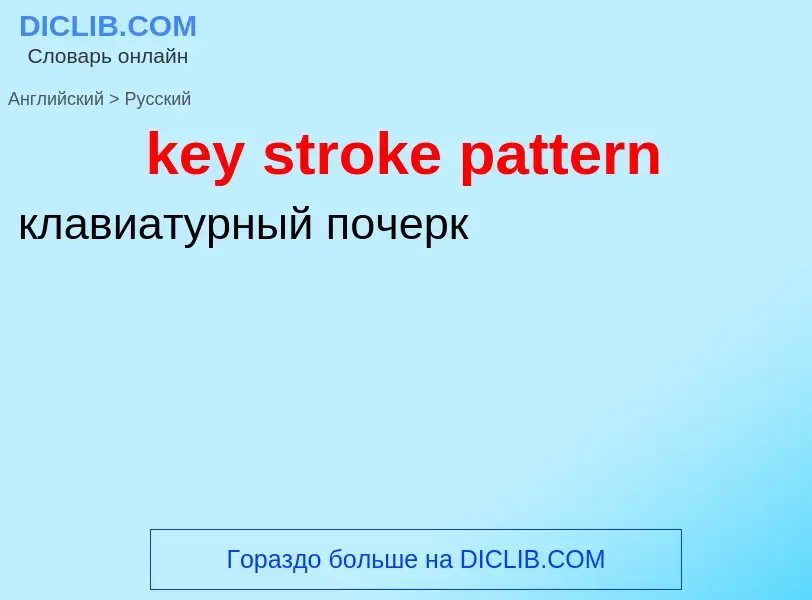Перевод и анализ слов искусственным интеллектом ChatGPT
На этой странице Вы можете получить подробный анализ слова или словосочетания, произведенный с помощью лучшей на сегодняшний день технологии искусственного интеллекта:
- как употребляется слово
- частота употребления
- используется оно чаще в устной или письменной речи
- варианты перевода слова
- примеры употребления (несколько фраз с переводом)
- этимология
key stroke pattern - перевод на русский
строительное дело
раскрой листового материала (операция)
['pætnmeikə]
существительное
общая лексика
модельер
модельщик (в металлургии)
металлургия
модельщик
['pætnrekəg'niʃ(ə)n]
общая лексика
распознавание образов
идентификация графических изображений с помощью компьютерных технологий. Используется, в биометрических методах контроля доступа для распознавания голоса, отпечатков пальцев, фотографий и. п
Определение
Википедия

In music, strumming is a way of playing a stringed instrument such as a guitar, ukulele, or mandolin. A strum or stroke is a sweeping action where a finger or plectrum brushes over several strings to generate sound. On most stringed instruments, strums are typically executed by a musician's designated strum hand (typically the musician's dominant hand, which is often responsible for generating the majority of sound on a stringed instrument), while the remaining hand (referred to as the fret hand on most instruments with a fingerboard) often supports the strum hand by altering the tones and pitches of any given strum.
Strums are often contrasted with plucking, as a means of vibrating an instrument's strings. In plucking, a specific string or designated set of strings are individually targeted to vibrate, whereas in strumming, a less precise targeting is usually used. Compared to other plucking techniques, any group of strings brushed in a single sweep by a plectrum could be considered a strum due to the plectrum's less precise string group targeting (however, a plectrum might simultaneously pluck a small group of strings without being considered a strum). In contrast, a musician could utilize a technique with more precise string group targeting (such as a fingerstyle or fingerpick technique) to pluck all the strings on a stringed instrument at once and this would still be considered a pluck, not a strum.


![upbeat]] downstrokes. upbeat]] downstrokes.](https://commons.wikimedia.org/wiki/Special:FilePath/Backbeat chop.png?width=200)



.jpg?width=200)
![Fitting a nettle/canvas-fabric on a [[dress form]] Fitting a nettle/canvas-fabric on a [[dress form]]](https://commons.wikimedia.org/wiki/Special:FilePath/Fitting muslin dummy.jpg?width=200)
.jpg?width=200)



![tailor's tack]] with thread to mark a pattern on fabric before cutting the fabric tailor's tack]] with thread to mark a pattern on fabric before cutting the fabric](https://commons.wikimedia.org/wiki/Special:FilePath/Basting pattern markings.jpg?width=200)



![ii-V<sup>7</sup>-I progression]] in C [[File:Ii-V-I turnaround in C.mid]] ii-V<sup>7</sup>-I progression]] in C [[File:Ii-V-I turnaround in C.mid]]](https://commons.wikimedia.org/wiki/Special:FilePath/Ii-V-I turnaround in C.png?width=200)
![The face was automatically detected]] by special software. The face was automatically detected]] by special software.](https://commons.wikimedia.org/wiki/Special:FilePath/800px-Cool Kids of Death Off Festival p 146-face selected.jpg?width=200)
